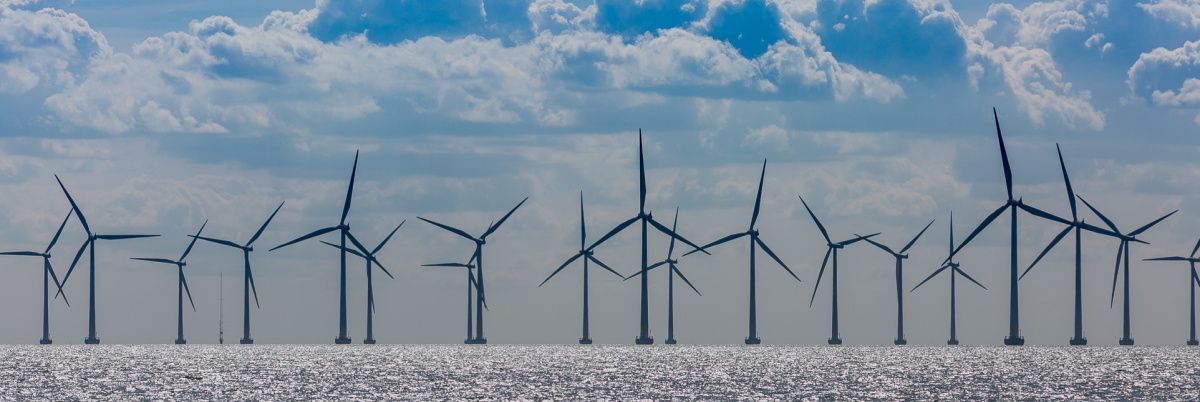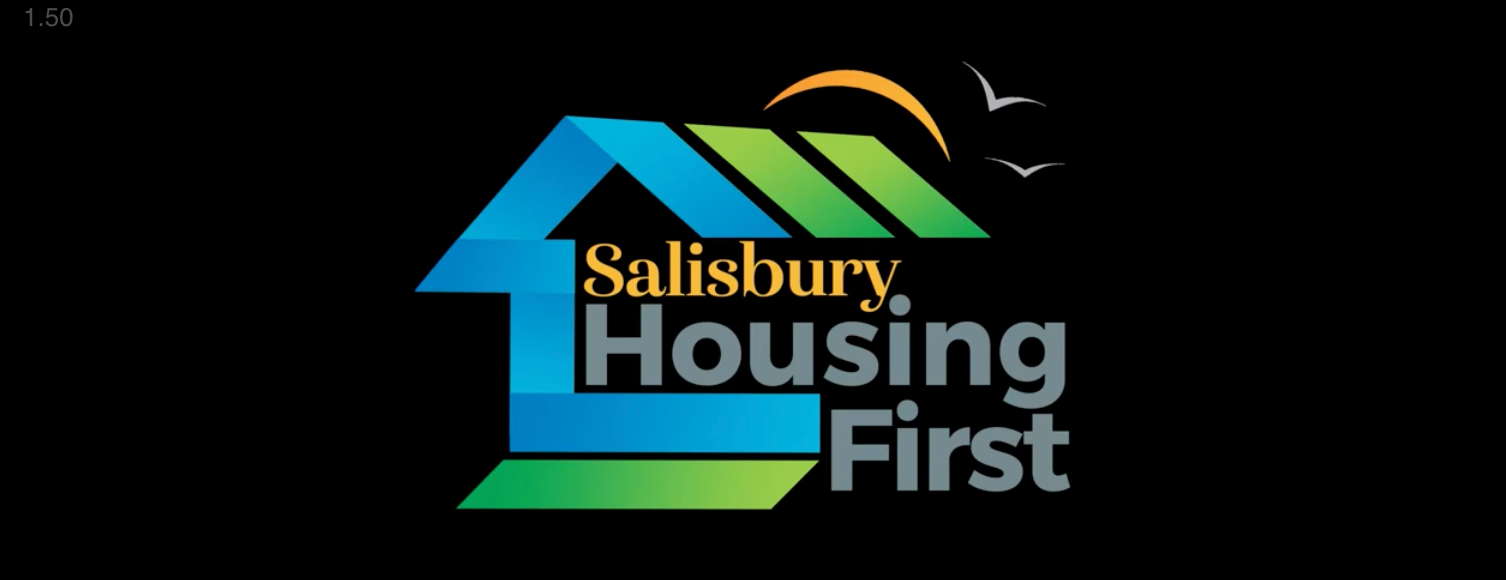More Osprey Reproduction Problems Found Around the Chesapeake Bay
Fishery managers debate 'precautionary' menhaden harvest closures

Perched on a nest atop a green navigation marker in Maryland’s Harris Creek, the osprey glared, spread its wings and started hopping as a boatload of people drew near.
“That’s a pretty big nestling standing up,” observed Barnett Rattner, a veteran scientist with the U.S. Geological Survey’s Eastern Ecological Science Center. “Last week, there were two.”
Peering at the agitated fish hawk through binoculars, Rattner spied the telltale reddish-orange eyes of a juvenile, so the boat halted its approach. They didn’t want to spook the youngster into trying to fly before it was able. It would almost certainly fall in the water and drown — perhaps the fate of its missing nestmate.
Rattner and USGS wildlife biologist Dan Day have been visiting osprey nests around Tilghman Island on Maryland’s Eastern Shore every seven to 10 days since early spring. They’re part of a multi-pronged effort to assess the birds’ breeding success around the Chesapeake Bay following a troubling report last year of a drastic reproduction decline in Virginia’s Mobjack Bay.
This year, researchers have been monitoring more than 600 breeding pairs of osprey in a dozen locations to see if the problem is happening elsewhere. They have been checking nests in 10 areas along both shores of the Chesapeake where menhaden, a favorite prey of ospreys, usually can be found. They’re also looking in two freshwater locations on Bay rivers where osprey rely on different fish for food.
The Chesapeake boasts the world’s largest breeding population of ospreys, estimated at 10,000 to 12,000 pairs. They have staged a remarkable comeback since the 1970s, when contamination from the pesticide DDT, ingested by ospreys from the fish they ate, devastated their ability to produce offspring. The federal government banned DDT in 1972.
While toxic chemicals still exist in the environment, the overall population of Bay ospreys continues to grow. But now, scientists are exploring a new potential threat: a lack of fish for ospreys to feed on.
Food shortage linked
In 2023, scientists with the Center for Conservation Biology at the College of William & Mary reported seeing a steep decline in osprey reproduction in Virginia’s Mobjack Bay, which lies between the Rappahannock and York rivers. They linked the breeding woes — even worse than in the DDT era — to a shortage of food, particularly Atlantic menhaden, a migratory fish that is the birds’ dietary staple there.

That finding has turned up the heat on a long-running controversy. Recreational anglers and conservationists have complained for years that large commercial harvests of menhaden near the mouth of the Bay in Virginia are harming other fish, especially Atlantic striped bass, which rely upon menhaden for food. That fleet works for Omega Protein, a subsidiary of a Canadian company that processes the menhaden at a plant in Reedville into animal feed and nutritional supplements.
The complaint has gone nowhere, in part because data are lacking on how abundant or scarce menhaden are in the Bay. Now, though, the report of nest failures in Mobjack Bay has given advocates fresh ammunition to press for a clampdown on the Chesapeake menhaden harvest. Following an Aug. 6 briefing by USGS scientists about osprey reproduction issues, the Atlantic States Marine Fisheries Commission, which regulates the menhaden catch along the East Coast, voted to study whether to impose seasonal closures of large-scale harvests of the fish in the Bay.
What the USGS scientists have seen so far in mid-Bay Maryland is similar to what the researchers reported in Virginia. Ospreys occupied only a little more than half of the 90 platforms, navigational markers and other available nesting sites where the two USGS scientists saw ospreys in their study area, which stretches from lower Broad Creek into Harris Creek and then around the western side of Tilghman Island.
The vast majority of those ospreys that did nest failed to produce or maintain young. By mid-July, there were many more empty nests than those that had even a single chick, much less two or three. Cruising down Harris Creek, Rattner pointed to one loss after another: “That one had eggs in it. It failed. That one never got started.”
During his 47-year career with the USGS, Rattner has studied ospreys in several Maryland and Virginia rivers of the Chesapeake, as well as in Delaware Bay. As an ecotoxicologist, he was researching whether pesticides and other toxic chemicals in fish might be affecting the birds’ reproduction or survival. The good news is that, while there are still some areas of concern, contaminants are decreasing and don’t appear to be affecting the overall osprey population in the Bay watershed.
But Rattner said the rate of successful breeding he and Day have seen in their Eastern Shore study area this year is far below what he saw 10 to 20 years ago.
Multiple reasons for failure
“All kinds of things happen to nests,” Rattner pointed out. Crows may feed on eggs if a nest is left unguarded even briefly. Great horned owls and bald eagles snatch chicks. Storms can blow nests off platforms. Diseases take a toll, as does the relentless summer heat. And some osprey pairs — perhaps rookies at breeding — build a nest but don’t produce eggs.
On a scorching day in mid-July, female ospreys were perched on some nests, wings outstretched in a few cases to shield the young beneath from the broiling sun. The males usually hunt for fish while the females stay on the nest.
To see if food availability might be a factor, Rattner and Day have mounted battery-operated cameras in four nests to monitor the number and type of fish the adults bring back to the nest. In one photo sequence, a male osprey delivered a juvenile striped bass for two chicks to consume.
There have been glitches with the cameras, though. The scientists have had to replace batteries and make other adjustments, including shifting at least one camera from a failed nest to one with eggs or chicks.
One year’s fieldwork is just a snapshot, of course. Rattner said that more research is needed to identify trends and fill data gaps.

And the apparent surge in nest failures does not mean the Chesapeake osprey population is in danger of collapsing — at least not anytime soon, said Bryan Watts, director of the Center for Conservation Biology. Ospreys nesting upriver in the Bay watershed are still producing plenty of offspring, and the overall population continues to grow.
“This is a long-lived species,” Watts said. “With lifespans averaging 15 to 20 years, they can withstand a dip in reproduction.”
But because ospreys subsist almost exclusively on fish, he said, they are a good indicator of fish abundance. That’s the main reason for the nest surveys, he added.
To date, Mobjack Bay is the only place with direct scientific evidence that menhaden — or their apparent scarcity — influenced osprey reproduction. There, scientists conducted a controlled experiment, feeding some newly hatched birds an extra ration of menhaden and comparing their better survival with those subsisting on what could be caught in the wild.
Watts suggested that high rates of nest failure seen in the areas where menhaden are usually abundant provide circumstantial evidence that food availability played a role.
Sign of food stress
“A high proportion of failures after hatching and a larger proportion of one-chick broods is a clear sign of food stress,” he said. For example, along Maryland’s Patuxent River, one of the areas Watts monitored this year, almost 60% of osprey pairs that successfully reproduced had one-chick broods.
Greg Kearns, a naturalist with the Maryland-National Capital Park and Planning Commission who’s been banding and monitoring ospreys on the Patuxent for 40 years, said he’d seen a significant drop this year in the number of ospreys attempting to nest.
And by early July, Kearns said he’d seen a lot of failed nests, particularly along the lower river, where menhaden traditionally make up the bulk of the ospreys’ diet.
There was something off about this nesting season almost from the beginning, Watts said. Ospreys returned to the Bay as usual in late February and early March after wintering in South America and the Caribbean. But many didn’t lay eggs in early spring or at all, he said. And many of the eggs laid in late spring either didn’t hatch or the chicks didn’t survive as summer temperatures climbed into the 90s.
“I think that the birds were squeezed with low food availability,” he said, “then ran into the heat wave.”
There were anecdotal reports that the schools of menhaden that return to the Bay every spring after wintering off the mid-Atlantic coast didn’t show up on time or at all this year. Some have suggested the Bay’s unusually low salinity the first half of the year after a wet winter and spring may have deterred them.
Of course, there may also be other factors affecting ospreys’ reproduction. Pete McGowan, a biologist with the U.S. Fish and Wildlife Service, said he suspects that nest predation has been a big factor in a near total failure of ospreys to produce young on Poplar Island, which is in the middle of the Bay about a mile west of Tilghman Island in Maryland. Only three nests out of 25 begun in the spring are still active, he said, with just one chick in each.
Poplar Island is not one of the 12 sites Watts and colleagues have been monitoring, but Watts suggested that at least some of those nest failures could still be an indirect result of food stress. If the male osprey doesn’t bring enough fish, the female may leave the nest unguarded to search herself, leaving it open to predators.
Fishery study delayed
So far, fisheries managers are not convinced that there’s a problem with menhaden. A 2022 stock assessment concluded that the coastwide population of the forage fish is not being overharvested. The Atlantic States Marine Fisheries Commission, which oversees near-shore fisheries from Maine to Florida, has for several years maintained a cap on the commercial harvest of menhaden in the Chesapeake. Conservationists and angler groups, however, contend that the cap is too loose and that the Virginia-based fishing fleet is depleting the stock there.

There’s been no study, though, to settle that dispute. Virginia lawmakers agreed in 2023 to draw up plans for a study, but this year they decided to wait until 2025 to decide whether to conduct the research. Meanwhile, the Virginia Marine Resources Commission has rejected petitions calling for a moratorium in Bay waters of the type of purse-seine harvesting performed by Omega’s fleet. Angler groups have gone to court seeking to force a cutback.
At the Aug. 6 meeting of the Atlantic States Marine Fisheries Commission, Lynn Fegley, fisheries director for Maryland's Department of Natural Resources, urged the body to adopt seasonal closures of large-scale menhaden harvests in the Chesapeake as a precaution to ensure that osprey and other fish-eating birds and fish have enough to sustain themselves. She said the state's commercial watermen are also suffering because menhaden are the preferred bait for harvesting blue crabs, the state's most lucrative fishery.
Other commission members countered that there are a number of factors affecting osprey reproduction, including competition for food from other birds and fish. They also noted that warming waters from climate change may be prompting some fish populations to shift farther north and away from the Bay. Pat Geer, the Virginia Marine Resources Commission's fisheries chief, argued that without more scientific evidence, it would be inappropriate to single out the state's Omega fleet for seasonal harvest closures.
The commission staff is in the process of updating "ecological reference points" it had adopted in 2020 to ensure there are enough menhaden left unharvested to sustain fish-eating birds and other fish.
Fegley's motion, which would have set the commission on a course to impose seasonal closures, failed. Then Allison Colden, Maryland director of the Chesapeake Bay Foundation and a commission member, proposed instead that a work group be formed to evaluate options for "precautionary" management of menhaden in the Bay, including possibly seasonal closures. It passed unanimously. The group is to make at least a preliminary report at the commission's next meeting in October.
This article was originally published in the Bay Journal, a non-profit news source that provides the public with independent reporting on environmental news and issues in the Chesapeake Bay watershed.
Common Sense for the Eastern Shore







